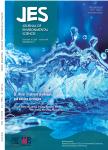Identifying the major fluorescent components responsible for ultrafiltration membrane fouling in different water sources
Identifying the major fluorescent components responsible for ultrafiltration membrane fouling in different water sources作者机构:State Key Laboratory of Urban Water Resource and EnvironmentSchool of Municipal and Environmental EngineeringHarbin Institute of TechnologyHarbin 150090China Heilongjiang Environmental Protection Academy of ScienceHarbin 150056China
出 版 物:《Journal of Environmental Sciences》 (环境科学学报(英文版))
年 卷 期:2016年第28卷第7期
页 面:215-223页
核心收录:
学科分类:083002[工学-环境工程] 0830[工学-环境科学与工程(可授工学、理学、农学学位)] 081704[工学-应用化学] 08[工学] 0817[工学-化学工程与技术] 081701[工学-化学工程]
基 金:supported by the National Natural Science Foundation of China(No.51208140) the National Water Pollution Control and Treatment Science and Technology Major Project of China(No.2012ZX07201002)
主 题:Membrane fouling Organic substances Three dimensional fluorescence matrix Parallel factor analysis Correlation analysis
摘 要:Three-dimensional fluorescence excitation–emission matrix(EEM) coupled with parallel factor analysis(PARAFAC) was performed for a total of 18 water samples taken from three water sources(two lakes and one wastewater treatment plant(WWTP) secondary effluent),with the purpose of identifying the major ultrafiltration(UF) membrane foulants in different water sources. Three fluorescent components(C1, C2 and C3) were identified,which represented terrestrially derived humic-like substances(C1), microbially derived humic-like substances(C2), and protein-like substances(C3). The correlations between the different fluorescent components and UF membrane fouling were analyzed. It was shown that for the WWTP secondary effluent, all three components(C1, C2 and C3) made a considerable contribution to the irreversible and total fouling of the UF ***, for the two lakes, only the C3 exhibited a strong correlation with membrane fouling, indicating that the protein-like substances were the major membrane foulants in the lake waters. Significant attachment of C1, C2 and C3 to the UF membrane was also confirmed by mass balance analyses for the WWTP secondary effluent; while the attachment of C1 and C2 was shown to be negligible for the two lakes. The results may provide basic formation for developing suitable fouling control strategies for sustainable UF processes.



